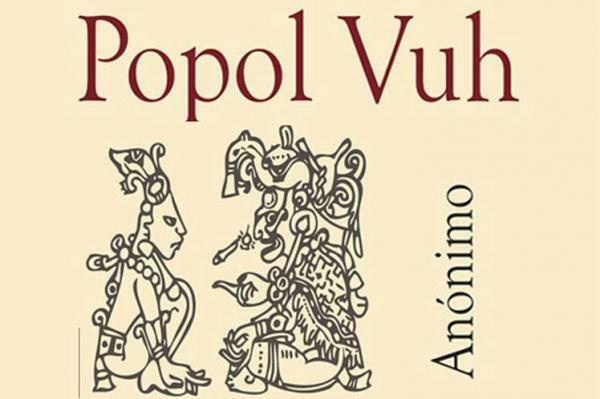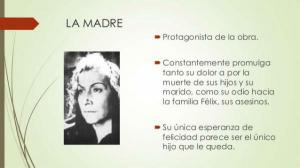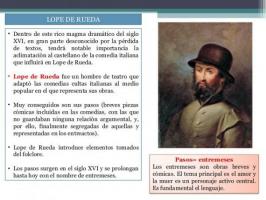Full SUMMARY of POPOL VUH

The Quiché people belonged to the great group of the Mayans and, from them, we obtained the Popol Vuh, a compilation of Sacred beliefs and customs that could be recovered thanks to the transcription into the language Spanish. The Quiché were a people belonging to Guatemala who had different mythical theories about the creation of the world, the human being and the functioning of nature; all of them come together in this work that, for many, is the Sacred Book of the Mayans. In this lesson from a TEACHER we are going to offer you a summary of the Popol Vuh so that you better know the content of its pages and understand the philosophy and mythology of the Mayans.
Index
- History of the Popol Vuh
- The author of the Popol Vuh
- Complete summary of the Popol Vuh
- Analysis of the Popol Vuh
History of the Popol Vuh.
Before starting with the summary of the Popol Vuh, we believe that it is important to contextualize this work a bit to better understand where it comes from and the content it hides. The word "Popol" means "community" and "Vuh" means "book", therefore, we are before
the book of the community of the Quiché people, a book that collects beliefs and stories of this mayan community. Today, this work is also known as the Quiché Bible, however, it is not a spiritual book but rather a compilation of theories on the origin of the world, the appearance of man on earth and natural phenomena.Studies indicate that this text It was written in the Quiché language about the year 1550 at the hands of a indigenous. This author, thanks to learning to write, managed to capture the typical oral histories that were related in the Quiché people and, above all, his source was an old man. However, the version that has come down to us from the Popol Vuh dates back to 1703 when Fray Francisco Ximenez he translated these beliefs into the Spanish language.
The publication of the Popol Vuh with this name was made in 1857 by a French clergyman, Charles Étienne Brasseur, that he extracted the copy from Spain to take it to Europe and publish it under the name of the Popol Vuh.

Image: Biblioteca Salvadora
The author of the Popol Vuh.
It is important to speak specifically about the author of the Popol Vuh. And, as we have already commented, it is believed that the original text was written by an indigenous person in the Quiché language, later translated into Spanish and later published by a French clergyman. Therefore, if we talk about the original author of the work, we have to refer to the first person who passed all the beliefs and theories of the Quiché people into the written text: the indigenous author. However, we have no reference whatsoever about his identity and, to this day, it is unknown who he could be.
The first author with a name and surname that we have on the Popol Vuh is the father Ximénez who was in charge of translating the text from the Quiché language to Spanish. The text was written in the Quiché language, a Mayan language, but using the Latin alphabet, therefore, the arrival of the Spanish had already taken place in Latin America. This has led many critics to point out the influence of christianity in this text and that, therefore, it cannot be considered a 100% Mayan book; furthermore, we must not overlook that the translator was a Christian priest.
It is important to note that none of the authors cited are the actual authors of the Popol Vuh since they only dedicated themselves to transcribing or translating stories from oral tradition. Therefore, we can affirm that the Popol Vuh is a popular work that it was transmitted from generation to generation orally and that it was created by the Quiché people themselves.

Image: Latin Press
Complete summary of the Popol Vuh.
Now that we have known the history of the Popol Vuh, we are going to dive into its content to know what its pages reveal to us. Here we offer you a summary of the Popol Vuh divided into the different themes that we find in this work.
The Popol Vuh is the most important Mayan text that is preserved today since it offers us a complete approach to Mayan history and mythology, but it is also a text with a great literary quality, something that has caused many critics to align it with other great works such as the Hindu Ramayana or the Odyssey.
The content of the Popol Vuh can be summarized in these big themes:
The creation of the world according to the Popol Vuh
It is important that we differentiate the creation of the world according to the Mayans than the one in this book. The first part of the Popol Vuh tells us about the creation of the world and we are told that the gods are in charge of creating the valleys, mountains, plants and animals. But they also want to create living beings that are in charge of venerating them and, therefore, they begin with the feat of creating beings that are capable of having this capacity for delivery. They create 4 different living beings:
- Four-legged animals and birds: they realize that they have the ability to speak so they try another creation
- Mud creature: they create beings made of clay but they also fail in their attempt because they fall apart when it rains
- Wooden men: They are beings that do not have the ability to worship the gods, therefore, they do not serve them either. The descendants of these wooden men will be the monkeys
- Humans: humans today created them on their fourth attempt. They are men who they came from corn and they were capable of worshiping the gods and fulfilling their obligations.
According to this theory, the gods realized that the human beings they had created were very powerful and, therefore, they decided blur your vision to reduce its power. And this is the explanation of the appearance of the human being according to the Popol Vuh.
Adventures of divine heroes
Continuing with this summary of the Popol Vuh we are going to focus now on another great theme that appears in this work: the adventures of the heroes. In the purest style Greek mythology, in these stories we will meet mythical characters who will fight to overcome the obstacles of men and create the behavior model ideal of the human being on Earth.
At this point in the book is when we meet some of the mythical characters of the Mayans as they are Xpiyacoc and Xmucané, those baptized as "guardians of the days". These divine beings had the power of divination and interpreted the Mayan calendar. His children are Uno Hunahpú and Siete Hunahpú who had other descendants such as twins Uno Mono and Uno Artesano who are considered the gods of the arts. During the Popol Vuh we will learn about the stories and mythologies of these characters who relate the beliefs of the Mayan people and offered an exemplary behavior that society should follow.
History of the Quiché lineage
And finally, in this summary of the Popol Vuh it is important that we refer to the last part of the book in which he presents us the history of the Quiche. As we have already said, this was a Mayan town but it had particular characteristics and beliefs. This is where we are told some fundamental aspects of its history that go from the beginnings of the Quiché people and even the arrival of the Spanish in America.

Image: Slideplayer
Analysis of the Popol Vuh.
We conclude this complete summary of the Popol Vuh to make a brief analysis of this very important work both on a literary and historical level. In the pages of this book we discover the beliefs that this Mayan people had about the nature and presence of the human being in the world. To do this, we attend the story of myths and legends that are led by divine beings and that serve as a role model for the rest of the population.
In the Popol Vuh we find a mythological and cosmogonic basis in which you can appreciate the strong link that this pre-Columbian civilization had with nature. In his beliefs there is a great protagonism of natural elements such as the sun, water, plants and animals; All these elements played a very important role in the destiny of the human being.
If you want to read more articles similar to Summary of the Popol Vuh, we recommend that you enter our category of Reading.
Bibliography
- Coin. (1975). Problems of the Popol Vuh. Mester, 5 (2).
- Sandoval, F. (2010). Popol Vuh: transparent version. Lulu. com.
- Dorado, M. R. (2000). Influence of Christianity on the Popol Vuh? Spanish Journal of American Anthropology, (30), 137-162.



